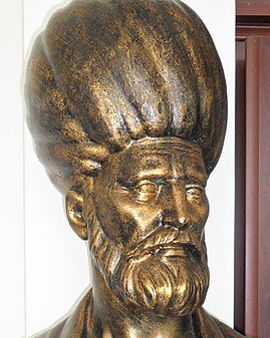


He achieved fame and glory, was the nephew of a notorious pirate and died an undignified death. Ahmet Muhyiddin Piri, who worked as a navigator, cartographer, privateer, politician, poet and military leader in the 15th and 16th centuries, lives on in the collective memory of the Orient to this day. His most significant legacy, the Map of Piri Reis, is among the most mysterious relics of the late Middle Ages and still puzzles historians and scholars alike.
There must have been the taste of salt water in the air when Ahmet Muhyiddin Piri was born around 1470 in the Turkish port city of Gallipoli. He will go down in history as Piri Reis, holder of the Ottoman title of Reis; comparable to the rank of admiral. Piri Reis spent his life at sea, following in the footsteps of his famous uncle, the pirate Kemal Reis. He fights in bloody sea battles against the Venetians and the Spanish, learns to master five different languages on his voyages and is considered one of the greatest polymaths of his time. In his early forties, Piri settles for a few years in his hometown of Gallipoli. There he worked on his literary works, writing poetry about sailing ships, for example. Finally, in 1513, Piri Reis produced his famous map. In addition to his own observations, the experienced sailor used various existing maps from different centuries for his opus magnum. One of them is said to have been a map drawn by Christopher Columbus himself, which Piri's uncle Kemal captured during one of his raids. This would at least explain the astonishingly exact depiction of the South American coastline. To this day, however, it remains unfathomable where Piri Reis got his knowledge about the location and shape of the north coast of Antarctica; according to today's knowledge, the southern continent was not even discovered until 1818. And as if all this were not strange enough, there is also the fact that Piri depicted Antarctica not as an icy, but as a greened area.
Just a few years after completing his famous map of the world, Piri Reis is drawn back out to sea. He serves as captain of the Ottoman fleet, has a part in the subjugation of Egypt and is even appointed governor there. Once again, the passionate seafarer uses his time ashore for his literary and cartographic work. At the ripe old age of 77, Piri Reis was finally appointed commander-in-chief of the Ottoman fleet. In this capacity, he succeeds in numerous conquests that increase not only the land mass but also the wealth of the Ottoman Empire. But his great successes do not only earn him admiration. It is an envious man who, in 1554, hatches a plot to eliminate the influential military leader. The diabolical plan works. The sultan believes the schemer and has the now 84-year-old Piri Reis publicly beheaded.

He achieved fame and glory, was the nephew of a notorious pirate and died an undignified death. Ahmet Muhyiddin Piri, who worked as a navigator, cartographer, privateer, politician, poet and military leader in the 15th and 16th centuries, lives on in the collective memory of the Orient to this day. His most significant legacy, the Map of Piri Reis, is among the most mysterious relics of the late Middle Ages and still puzzles historians and scholars alike.
There must have been the taste of salt water in the air when Ahmet Muhyiddin Piri was born around 1470 in the Turkish port city of Gallipoli. He will go down in history as Piri Reis, holder of the Ottoman title of Reis; comparable to the rank of admiral. Piri Reis spent his life at sea, following in the footsteps of his famous uncle, the pirate Kemal Reis. He fights in bloody sea battles against the Venetians and the Spanish, learns to master five different languages on his voyages and is considered one of the greatest polymaths of his time. In his early forties, Piri settles for a few years in his hometown of Gallipoli. There he worked on his literary works, writing poetry about sailing ships, for example. Finally, in 1513, Piri Reis produced his famous map. In addition to his own observations, the experienced sailor used various existing maps from different centuries for his opus magnum. One of them is said to have been a map drawn by Christopher Columbus himself, which Piri's uncle Kemal captured during one of his raids. This would at least explain the astonishingly exact depiction of the South American coastline. To this day, however, it remains unfathomable where Piri Reis got his knowledge about the location and shape of the north coast of Antarctica; according to today's knowledge, the southern continent was not even discovered until 1818. And as if all this were not strange enough, there is also the fact that Piri depicted Antarctica not as an icy, but as a greened area.
Just a few years after completing his famous map of the world, Piri Reis is drawn back out to sea. He serves as captain of the Ottoman fleet, has a part in the subjugation of Egypt and is even appointed governor there. Once again, the passionate seafarer uses his time ashore for his literary and cartographic work. At the ripe old age of 77, Piri Reis was finally appointed commander-in-chief of the Ottoman fleet. In this capacity, he succeeds in numerous conquests that increase not only the land mass but also the wealth of the Ottoman Empire. But his great successes do not only earn him admiration. It is an envious man who, in 1554, hatches a plot to eliminate the influential military leader. The diabolical plan works. The sultan believes the schemer and has the now 84-year-old Piri Reis publicly beheaded.
Page 1 / 1






